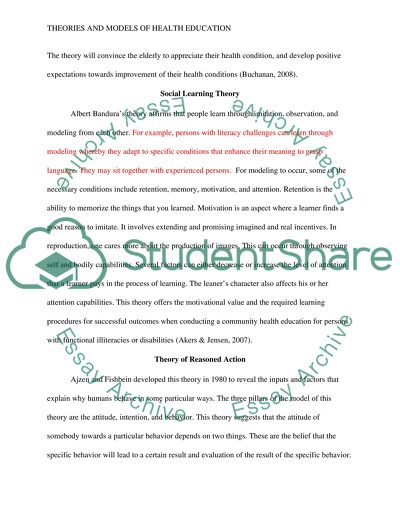Theories and Models of Health Education Essay Example | Topics and Well Written Essays - 750 words. Retrieved from https://studentshare.org/health-sciences-medicine/1465319-theories-and-models-of-health-education
Theories and Models of Health Education Essay Example | Topics and Well Written Essays - 750 Words. https://studentshare.org/health-sciences-medicine/1465319-theories-and-models-of-health-education.


